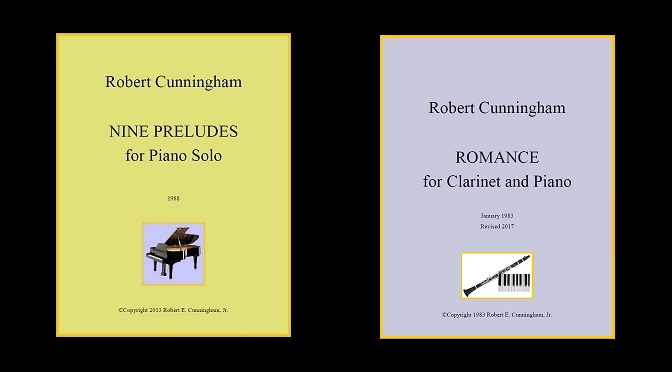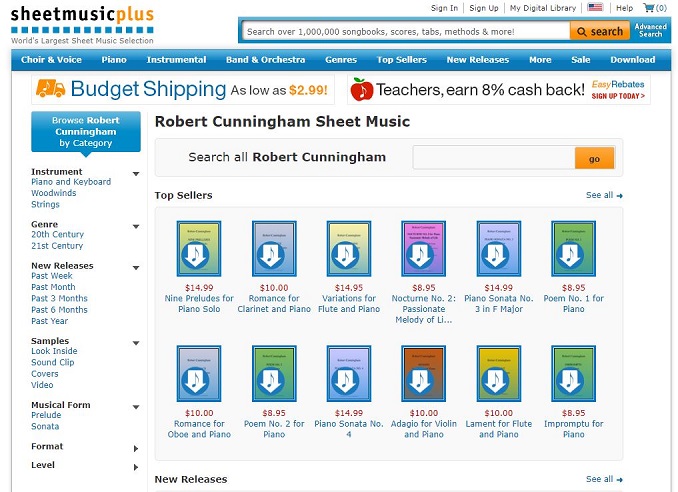About My Scores
The cycle of musical creation is not complete without the performer, and the ideal performer is typically someone other than the composer himself. My own music has primarily been composed, not for my own performance, but with other performers in mind. The primary mode of communication between the composer and the performer, of course, is the printed score.
That is why I launched a personal project more than five years ago to make available clean, modern editions of my scores, using Finale software. In some cases these editions have been based on older scores printed years ago by earlier software; in other cases they were based on handwritten manuscripts that had long laid unplayed, gathering dust. Often I have made revisions during the process, in accordance with my current artistic inclinations. The project is far from complete, but already new editions have been created in PDF format for my Nine Preludes, my Piano Sonata No. 3 and Piano Sonata No. 4, six shorter piano compositions, and eleven chamber and vocal works. Scores for the chamber works include individual parts where appropriate. Over the last year I have started uploading these scores to Sheet Music Plus, where they are publicly available at modest prices, and eventually they should all be included there.
In these scores I seek to minimize the burden on the performer by presenting the music in an easily understandable form and making my artistic intentions clear. Unlike many contemporary composers, I am scrupulous about notational details such as courtesy accidentals. I also recognize that every performer and every performance is unique. In the case of pianists, for example, performers differ in hand size, flexibility, and their abilities to execute rapid leaps at the keyboard. Fingering is therefore very personal, so I do not normally indicate fingering in the scores, although I often include markings to indicate how notes should be redistributed between the hands (as discussed in a recent post to this blog). Variations in pianos and acoustical environments may call for differences in pedaling, touch, and even tempo. In many cases, I provide specific pedal marks, but in other cases I may indicate merely “col Ped.” — i. e., “with pedal” — allowing the performer to decide just where to change pedal. Tempo indications are usually accompanied by metronome markings, but the latter should be treated only as guidelines.
I encourage you to click on the Sheet Music Plus link above and browse through the listings at your leisure.


